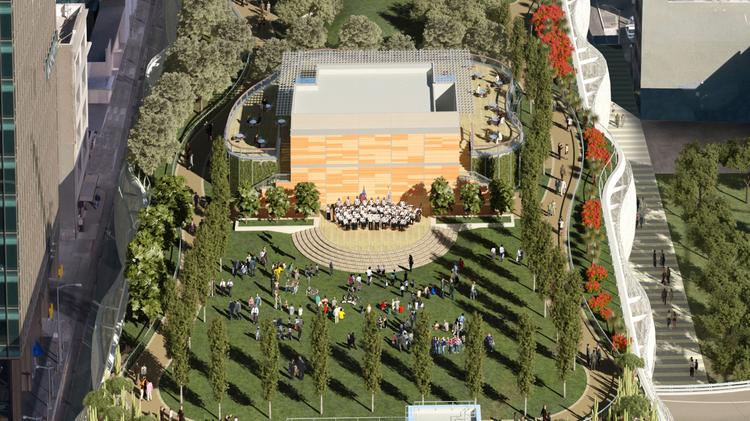

600 individual trees and 16,000 plants are arranged in 13 different botanical feature areas including a wetland garden, an oak meadow, a redwood forest, and a desert garden. Much of this planting comprises California natives (11 California native tree species and 34 California herbaceous species) and includes plants such as island oak ( Quercus tomentella), Calfornia lilacs ( Ceanothus), sticky monkey-flower ( Mimulus aurantiacus), and white sage ( Salvia apiana).


The rooftop supports 96,432 sf of pollinator and wildlife habitat encompassing 45% of its area.Bridges connect 3 adjacent towers directly to the park, allowing people in the tower offices above to descend directly into it. The park is easily accessible because of its location on top of a transit center and proximity to the bus depot and other transportation hubs including BART, Muni, Golden Gate Transit, and Amtrak.A curving concrete path leads visitors through a quarter-mile loop around the perimeter of the green roof, allowing for easy navigation.A constructed wetland at the east end of the park was designed to collect greywater from the restrooms within the transit center and to treat it for re-use in toilets and urinals in terminal restrooms.In order to create a topography that blurs the distinction between roof and ground, the park integrates mounded vegetated hills with domed architectural skylights that allow daylight into the terminal below.Geosynthetic fill was used to build up the rolling topography of the park while adding minimal weight to the structure. This layered planting system is a structurally engineered component of the building that functions to balance seismic shifting, collect and filter stormwater, and irrigate the gardens. The 5.4-acre green roof has soil depths that vary from 18 inches to 4.5 ft.


 0 kommentar(er)
0 kommentar(er)
